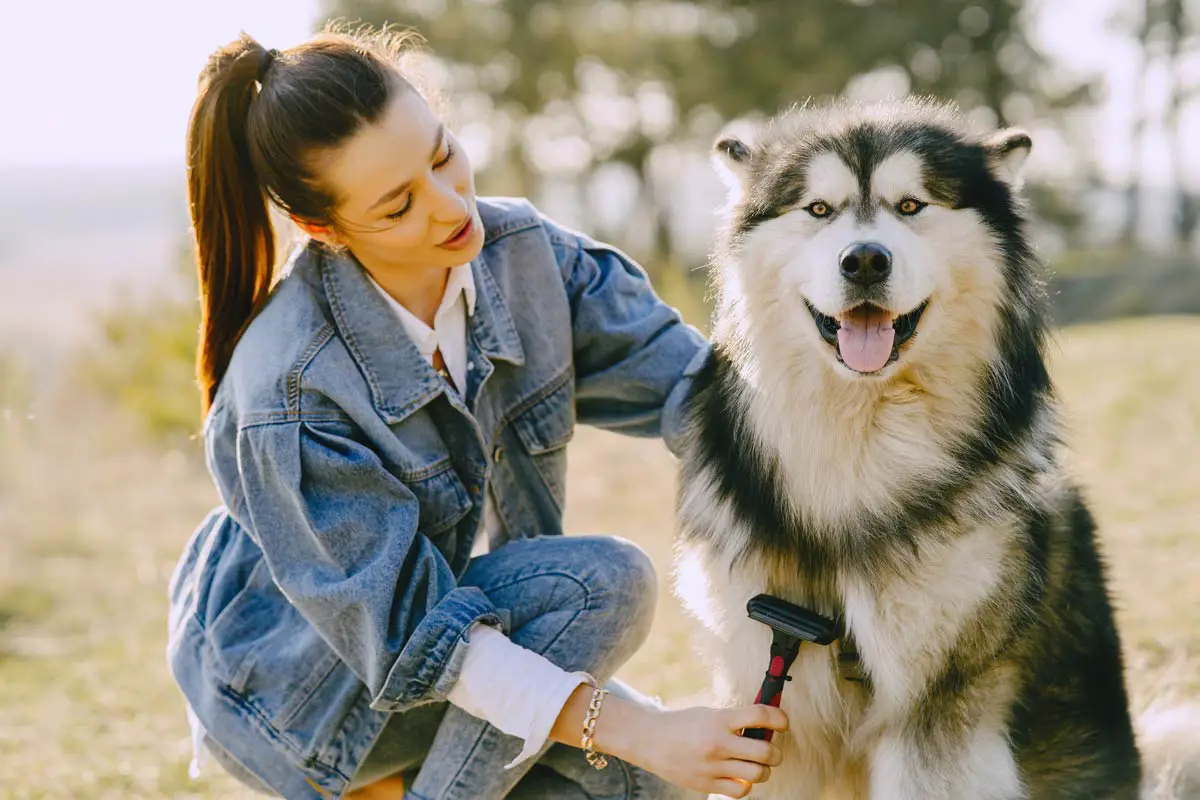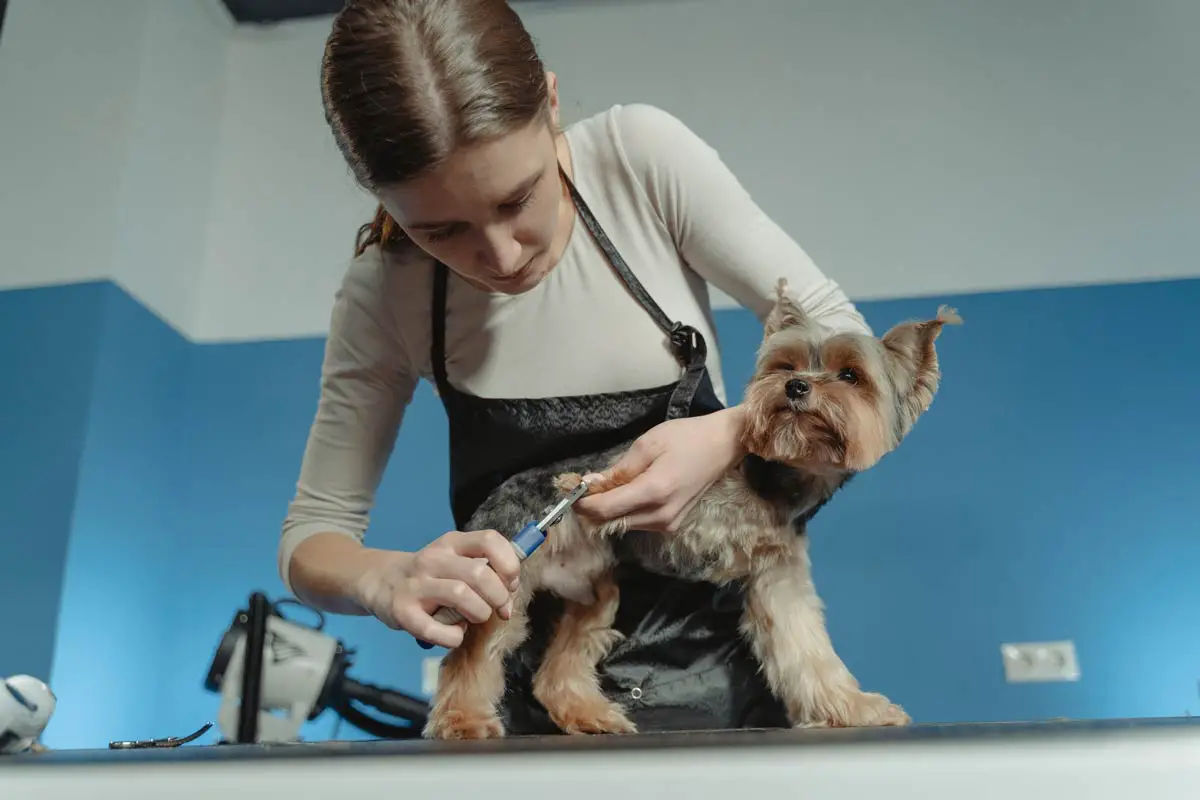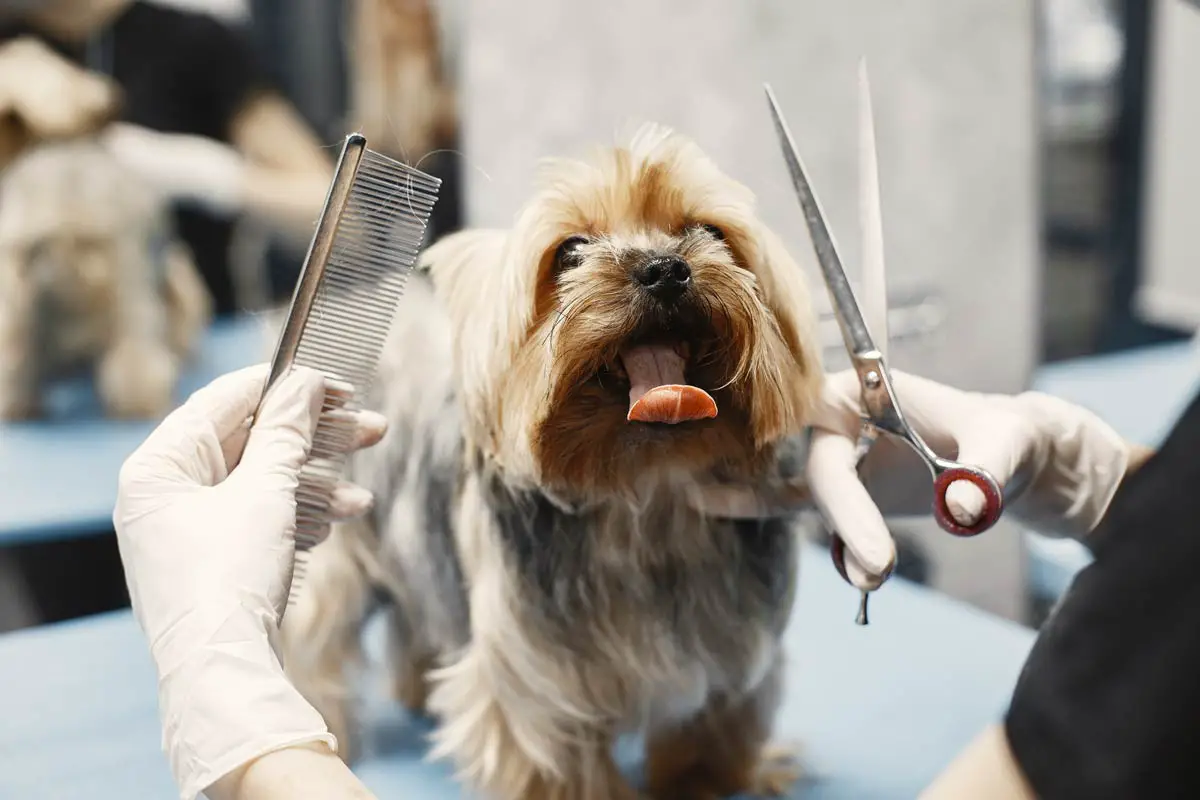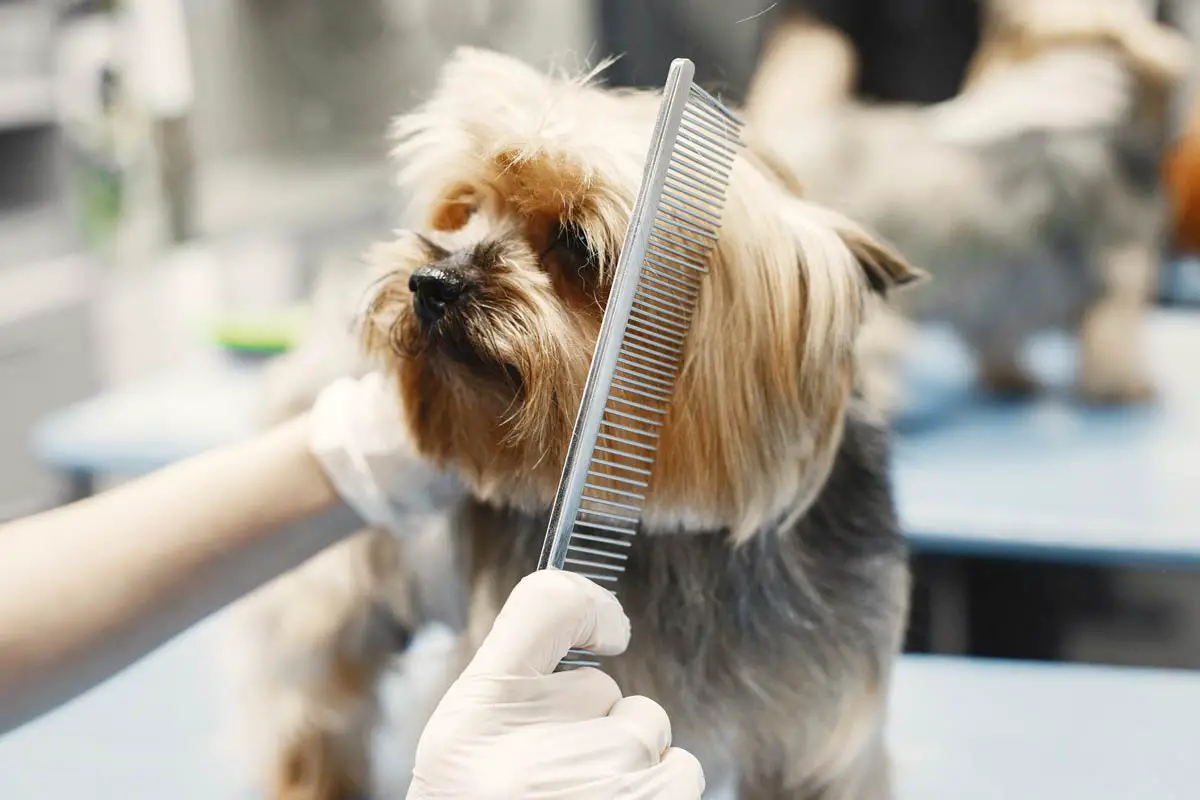Dog Grooming is an important aspect of pet care that not only keeps your furry friend looking neat and tidy but also contributes to their overall health and well-being.
While professional grooming services are available, learning how to groom your dog at home can save you time and money.
In this article, we will guide you through the essential dog grooming techniques, including brushing, bathing, nail trimming, ear cleaning, eye cleaning, tooth brushing, and haircuts.
So, let’s dive in and discover how to give your beloved canine companion the pampering they deserve!

1. Brushing
Regular brushing helps maintain your dog’s coat health and prevents matting.
It also helps distribute natural oils, keeping their skin moisturized.
To brush your dog, start with a suitable brush or comb based on their coat type.
- For long-haired breeds, use a slicker brush to remove tangles and a wide-toothed comb to detangle and smooth the fur.
- Short-haired dogs can benefit from a bristle brush.
Remember to be gentle and patient while brushing to avoid causing any discomfort to your furry friend.
2. Bathing
Bathing your dog not only keeps them clean but also helps remove dirt, debris, and odors from their coat.
Start by choosing a dog-specific shampoo that suits your pet’s needs and slathering it onto their wet fur.
Rinse thoroughly, ensuring no residue is left behind. Take care to protect their eyes and ears from water and avoid getting shampoo into these sensitive areas.
After bathing, towel dry or use a hairdryer on a low setting, if your dog is comfortable with it.
It is recommended to bathe your dog once every 3-4 months or as needed.

3. Nail Trimming
Trimming your dog’s nails is essential to prevent discomfort and potential injuries.
Invest in a pair of quality dog nail clippers or a grinder.
Gently hold your dog’s paw and trim the tip of each nail, being cautious not to cut too close to the quick—the sensitive area within the nail.
If you’re unsure about the process, consult a professional groomer or your veterinarian for guidance.
4. Ear Cleaning
Regular ear cleaning helps prevent ear infections and keeps your dog’s ears healthy.
Use a dog-specific ear-cleaning solution and cotton balls or pads.
Gently lift your dog’s ear flap and clean the visible part of the ear, being careful not to insert anything into the ear canal.
If you notice any redness, swelling, or discharge, consult your veterinarian.
5. Eye Cleaning
Keeping your dog’s eyes clean helps prevent tear stains and infections.
Use a damp cloth or dog-specific eye wipes to gently wipe away any debris or discharge from the corners of their eyes.
Be cautious not to touch their eyes directly or use any harsh chemicals near their eyes.
If you notice excessive tearing or any signs of discomfort, consult your veterinarian.
6. Tooth Brushing
Maintaining good oral hygiene is crucial for your dog’s overall health.
Use a dog-specific toothbrush and toothpaste to brush your dog’s teeth regularly.
Start by gradually introducing the toothbrush and toothpaste to your dog, allowing them to get familiar with the taste and sensation.
Brush their teeth using gentle circular motions, paying extra attention to the gum line.
If your dog resists brushing, consult your veterinarian for alternative dental care options.

7. Haircuts
Depending on your dog’s breed and coat type, regular haircuts may be necessary to keep their fur manageable and prevent matting.
Some breeds require professional grooming for haircuts, while others can be done
8. Tips for Grooming Dogs at Home
Here are some helpful tips to ensure a successful dog grooming session:
- Create a Calm and Safe Environment:
Set up a designated grooming area in a quiet space where your dog feels comfortable.
Remove any potential hazards and make sure the area is well-lit.
Consider placing a non-slip mat or towel on the floor to provide stability for your dog. - Use the Right Tools:
Invest in high-quality grooming tools suitable for your dog’s breed and coat type.
This may include brushes, combs, nail clippers, ear-cleaning solutions, eye wipes, toothbrushes, and dog-specific shampoos.
Using the appropriate tools will make the grooming process easier and more effective. - Start Slow and Gradual:
If your dog is new to grooming or tends to get anxious, introduce the grooming process gradually.
Begin with short grooming sessions, focusing on one aspect at a time, such as brushing or nail trimming.
Reward your dog with treats and praise for their cooperation and gradually increase the duration of each session as they become more comfortable. - Seek Professional Help if Needed:
If you encounter difficulties or your dog requires specialized grooming, do not hesitate to seek professional assistance from a groomer or veterinarian.
They can provide guidance, handle more intricate grooming tasks, and address any specific concerns.
Remember, patience, consistency, and positive reinforcement are key when grooming your dog at home.
By establishing a routine and making grooming a positive experience, you can help your furry friend look and feel their best while.
Related: 10 Simple and Effective Tips for Eliminating Pet Odors at Home

9. Conclusion
Grooming your dog at home is a great way to bond with your furry friend.
It also helps keep them healthy and comfortable.
Remember to always use dog-specific grooming products and consult with your veterinarian if you have any concerns.
Read more:
Mudi Dog Breed: Main Characteristics & Care Guide
Bolognese (Bolo) Dog Breed: Main Characteristics & Care Guide










